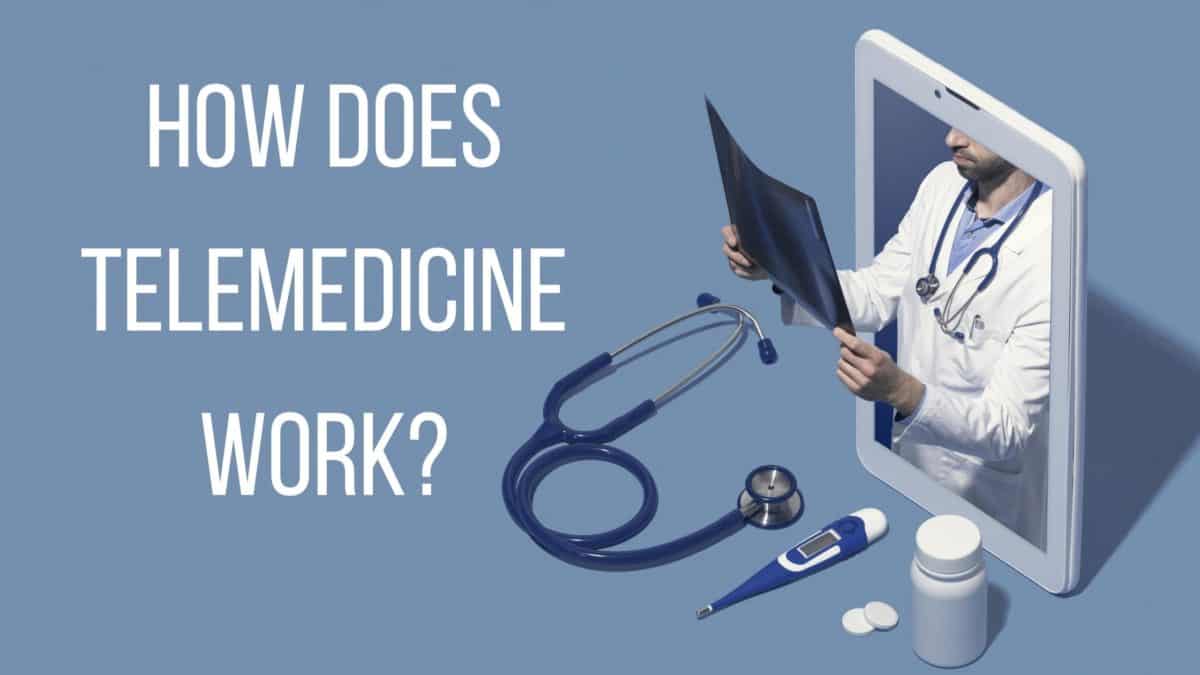0% financing available. Up to 3-year loss and damage guarantee.

How does Telemedicine Work?
- Navigating the Conversation: The Significance of Thoughtful Disclosure in Hearing Loss - December 10, 2023
- The Sound of Dreams: Understanding How Hearing Loss Impacts Dreaming - November 7, 2023
- Traveling Effectively with Hearing Aids - October 16, 2023
Virtual appointments with healthcare providers have been invaluable for millions of people during the pandemic. Telemedicine, also referred to as telehealth, refers to utilizing telecommunication technologies to provide healthcare services remotely. Though telemedicine has been around for decades, these services have expanded and been relied on now more than ever before. Offering convenience and reduced exposure to COVID-19, telemedicine is an important way to access healthcare. Though it is necessary and beneficial, virtual services can be challenging for people with hearing loss. Understanding and practicing ways to best navigate telemedicine can help you maximize healthcare services.
How does Telemedicine work?
There are various technologies, tools, and platforms that are used to provide healthcare services virtually. Telemedicine usually starts with a virtual consultation through a video chat tool with a primary care physician or specialist. Several platforms could be used to facilitate this appointment including Zoom, FaceTime, Skype, Google Meet, etc. This appointment could also happen over the phone if assessing symptoms visually is not essential.
During virtual appointments, you and your healthcare provider can discuss symptoms you are experiencing, they may visually inspect specific areas and ask questions, share a diagnosis, treatment options, etc. Telemedicine also involves using a range of digital tools and online portals to track health-related information. This includes results from tests, doctors’ notes, treatment plans, etc. which patients can access by logging into the portal.
Benefits of Telemedicine
There are numerous benefits of telemedicine. These benefits are especially heightened during the pandemic which has significantly altered the way we live. Major benefits include:
- More access: distance and mobility can create barriers to accessing healthcare for people living in rural areas and people with disabilities. The capacity to meet with patients virtually expands the base of care, creating greater possibilities for people who live further to receive these services. Additionally, for people who deal with mobility issues, virtual appointments can make it easier and more comfortable.
- Greater convenience: being able to meet with healthcare providers remotely can be incredibly convenient. This is especially useful for parents, aging adults, and people who are constantly traveling. Virtual appointments do not require you to travel for your appointment, rather, they can happen in the comfort of the space you are already in.
- Increased safety: virtual appointments do not require leaving your home which is especially useful during the pandemic. This means you do not have to navigate public spaces and interact with others face-to-face which reduces your exposure to COVID-19.
These benefits make it convenient to access healthcare services which are critical for maintaining health and wellness.
Tips to Navigate Telemedicine Effectively
Though virtual appointments do offer greater access and convenience, they also can create a new set of challenges for people with hearing loss. Hearing loss is one of the most common conditions people experience today, impacting over 48 million people. Half of all adults 75 and older have hearing loss in the U.S. So practicing ways to maximize hearing can mitigate hearing difficulties during appointments. A few tips include:
- Prep before appointment: be sure to test the device you are using for your appointment, ensuring that your internet connection is secure. Also, be in a well-lit area so that you are easily visible. This is especially important if your healthcare provider will be assessing symptoms visually.
- Wear headphones: sound issues can be the greatest challenge. Wearing headphones reduces background noise, making it easier to hear. In addition to wearing headphones, be sure to be in a quieter environment and to power off any sources of background noise.
- Use captioning services: ask your healthcare provider if they can apply captioning services to the platform you will be using. This would allow real-time transcription of what is being said, making it easier to understand and follow along. You can also access the transcript after.
- Advocate for hearing needs: during your appointment, make sure to advocate for your hearing needs. This includes asking for clarification if you missed something, sharing specific communication strategies that are helpful for you, or taking the time to write things down.
If you haven’t already accessed virtual healthcare services, you’ve likely thought about it in recent times. If you are interested in trying telemedicine, consult with your doctor about the telehealth services they provide.
